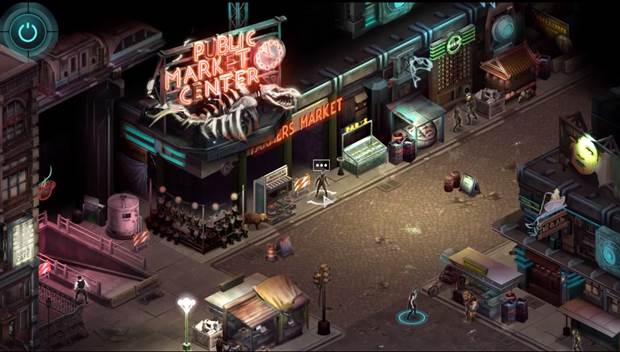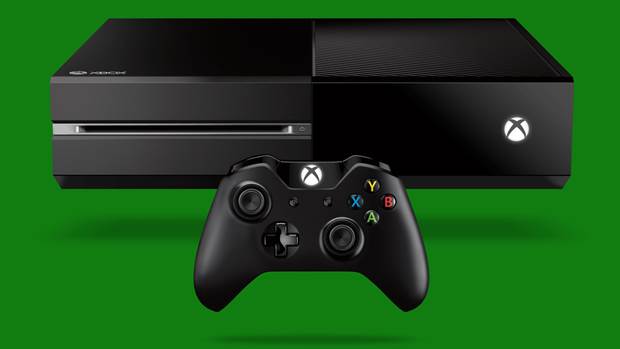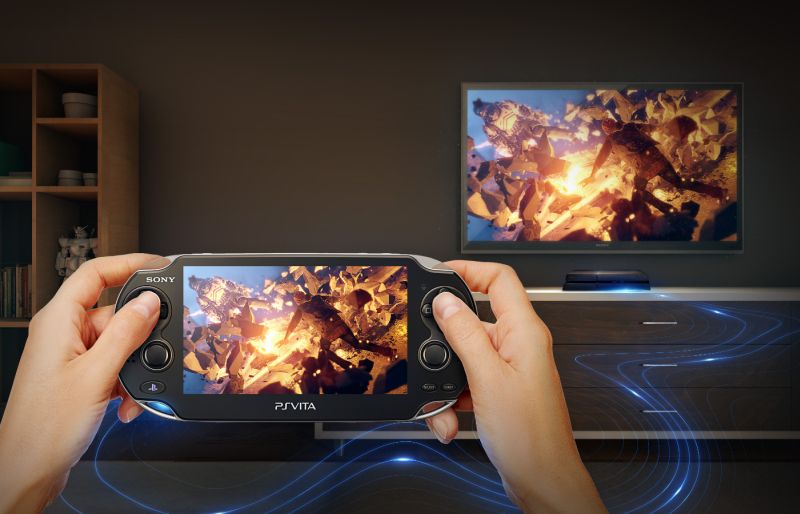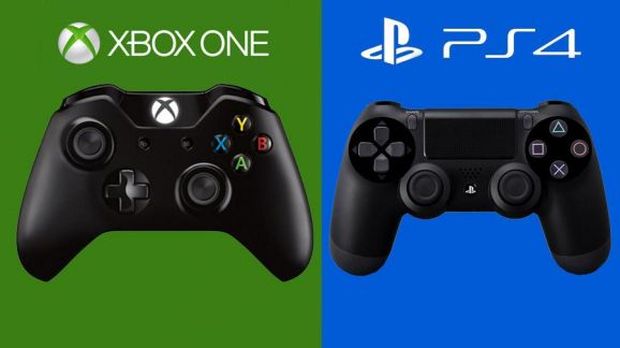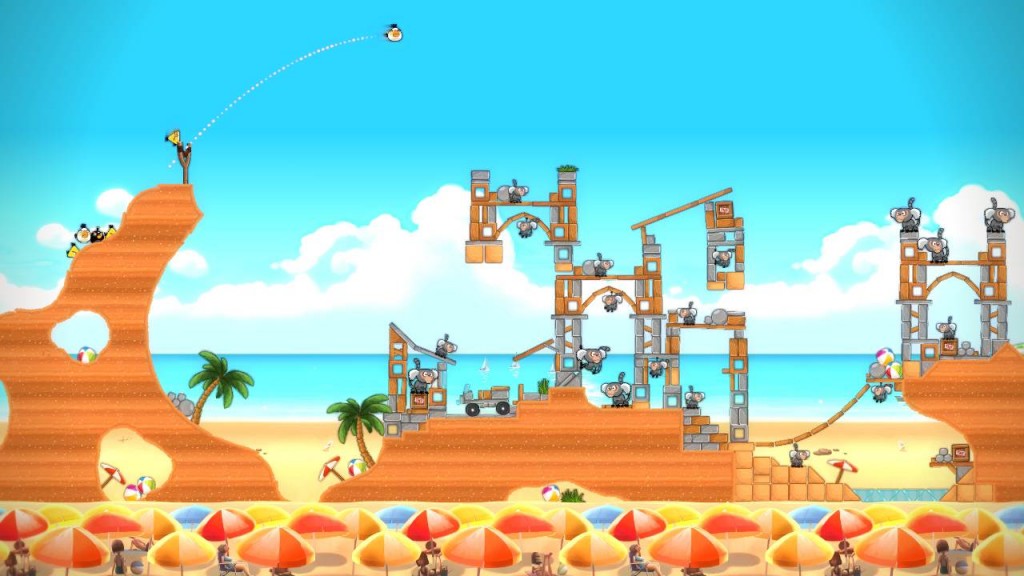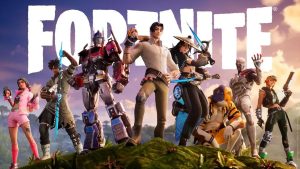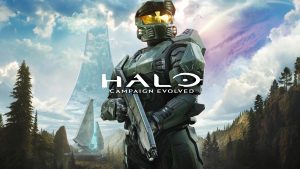
Shadowrun Returns creator and Harebrained Schemes founder Jordan Weisman is one of the most important and yet under-rated veterans in the gaming industry. The man was one of the original creators of the Shadowrun table-top RPG, created MechWarrior at FASA Corporation and with Shadowrun Returns, showed us that it’s possible to create an isometric tactical RPG funded on Kickstarter and make it a reality. Amazingly enough, his is one of the crowd-funded only projects to have been fully funded and released to the masses without any delays. He even had time to make the best better with Shadowrun: Dragonfall.
With that in mind, GamingBolt spoke to Weisman about the current state of the gaming industry, from next gen consoles and indie gaming to mobile platforms and the Steam Box. There’s been a lot going on in the industry as of late, but Weisman has more than enough to say and worth even more to listen to.
"We’ve been very excited at the wonderful critical reception, but we’ve also been looking at the fans and at the reviews for “What are the next set of improvements we make?” As we dive into the new story that we want to tell in this world, what are some of the game mechanics and system level things that we want to fix, and we pick off the most important of those, and try to add that for the next go around."
Ravi Sinha: When you finished developing Shadowrun Returns, how did you go about improving the campaign for Dragonfall, and what are your thoughts on the existing criticisms for the game, if there are still any?
Jordan Weisman: Well, I’m sure there’s always going to be criticism. That’s the nature of any creative enterprise. After we finished the campaign for Returns – we were under some pretty tight restraints for that game, because we had been working so long and hard on creating this powerful editor that we and the UCG community could use to tell stories – we didn’t have as much time as you would hope to create the actual story ourselves, and so we knew we had to keep it pretty linear in order to cut down on how much content we had and also the extensive testing that has to happen when you do some more nonlinear stuff, and we rightly took some hits for that and some criticism when the game came out.
So we listened to that, and we listened to a lot of the other things that players were looking for in the design, and took those into account in the design of Dragonfall. Dragonfall has a much more nonlinear structure to it. It’s not an open world game, it’s not a sandbox game, that’s not the engine we built or the type of game we were trying to create, but you have a lot more agency in the selection of which runs you go on and when you go on them in the whole center part of the game.
In the first game, we wanted to open it up so the players could create any character they wanted, because so many people had these longstanding desires to go back and play their favorite tabletop character or different things that were fascinating about them, and so we wanted to make sure that it was very open so you could create and play any character you wanted. Of course, that also creates a challenge from a storytelling standpoint because when you can be anybody, it’s hard for the world to respond to you in the level of depth and specificity as if you were a pre-created and written individual.
Ravi Sinha: Right.
Jordan Weisman: And this is also true of the way we handled you building of the rest of your team. With the exception of some persistent characters like Coyote and Paco, the majority of the members of your team were kind of transient, and so you didn’t really build a deep relationship with them and that’s something players clearly told us they wanted to be able to do.
When Mike started on the creative direction for Dragonfall, all of those things were foremost in our mind, as well as, obviously, from an engineering standpoint, the save game, which was another place that we had to make tough choices in the first title, and we went back and did what people were looking for, which was a save anywhere system for Dragonfall, which has also been ported back to Shadowrun Returns.
As Mike dove into the campaign on Dragonfall, he really took those things into account. For one, you are a specific character, so the world reacts to you in that way and the team you’re with is consistent and you really build deep relationships with them and their back stories really count in terms of what’s going on in this story, and as we discussed before, that whole center section being a lot less linear are all things that were in response to the audience and so far have been really warmly received, both by critics, where we’ve gotten fantastic critical reception, and by players, who seem to really appreciate that we’ve listened and that we’ve made those improvements.
Ravi Sinha: Even with all of the critical acclaim, is there still something that you would want to go back and fix in Dragonfall, and if not in Dragonfall, maybe something in Shadow Returns?
Jordan Weisman: Well, we ported back the save game to Shadowrun Returns, and I think we’re really more focused on what comes next. We’ve been very excited at the wonderful critical reception, but we’ve also been looking at the fans and at the reviews for “What are the next set of improvements we make?” As we dive into the new story that we want to tell in this world, what are some of the game mechanics and system level things that we want to fix, and we pick off the most important of those, and try to add that for the next go around.
"Well, it’s an interesting discussion [on Shadowrun]. We have not embarked on that yet, largely because our kneejerk reaction is that there would be a significant cost to adapting our control scheme to the Xbox One controller, because a mouse and keyboard game is not an easy translation to a console controller."
Ravi Sinha: So if there is going to be another expansion, what can we expect?
Jordan Weisman: It’s too early to be taking about that yet. We’re still making up for lost sleep and starting to work on what comes next.
Ravi Sinha: One of the things you mentioned about Shadowrun was the content creator that you had in there. Have you been seeing any significant creations from fans when it comes to missions and such?
Jordan Weisman: We have. There are hundreds of missions that have been posted, and like in any UGC community, there are a lot of people just kind of playing around, but there are dozens of ones that are really rich and well-written and have really interesting designs to them. They’ve done things with the editor that we had never thought about, which is exactly what you would expect.
The cumulative creative power of the audience is enormous, and we’re really starting to see some of those things come to light, and it’s really exciting to see and experience. Mitch and I have been doing a series of videos where we play some of the UGC as kind of a “Let’s Play” and we experience it firsthand, and then some other videos where we give some critiques on things, and how to make them better. It’s just exciting to see what the audience is doing.
Ravi Sinha: Have you seen any user-created missions where you sort of get inspired and think to yourself, “Maybe we can make something like that in the next expansion, or something we want to put in later on?”
Jordan Weisman: Oh, there’s no question that with some of the cool tricks we saw people come up with in UGC after Shadowrun Returns, we were like, “Hey, that’s a good one. We’ll remember that one.” Some of those have definitely made it into Dragonfall.
Ravi Sinha: I know a separate team has been developing it, but I wanted to ask you about Shadowrun Online, which has been in closed beta since May 2013. Have you been able to play it yourself, and have you been able to keep track of the development progress for the game?
Jordan Weisman: Unfortunately, I have not. I got to know Yan a little bit, mostly via Skype, two years ago now, but I have never played the online one at all. I’ve just been so heads-down on Shadowrun, and for the last several months on Golem Arcana, which is the other project we’re working on in the studio. It’s been a little overwhelming between those two, so I have not had a chance to play the online product.
Ravi Sinha: I wanted to ask you a bit about the next-gen consoles. Would you consider bringing Shadowrun Returns or Dragonfall to the Xbox One? The response to indie titles has been particularly good thus far, so there could be a chance to appeal to tactical RPG fans on Microsoft’s console.
Jordan Weisman: Well, it’s an interesting discussion. We have not embarked on that yet, largely because our kneejerk reaction is that there would be a significant cost to adapting our control scheme to the Xbox One controller, because a mouse and keyboard game is not an easy translation to a console controller.
We designed it so that it would be an easy translation to tablets, because both of those have much more ability to interact with world objects through a pointer, but on console, you don’t really have that pointer ability. It would be a pretty significant expense for us, and so, so far, we haven’t seriously considered it.
"Well, now everybody is going more and more to indie development and indie publishing, and having direct access to audiences. They’re trying to find that middle ground between a completely open platform, like Android or iOS, and the completely closed platforms that consoles have historically been."
Ravi Sinha: Microsoft has this parity clause for their ID@Xbox program, which is their program for indie titles. Have you heard of it?
Jordan Weisman: No, I haven’t. My head has been too far down in these other titles. What is it about?
Ravi Sinha: I’m still pretty unsure about it because it was pretty complicated when it first came out, but if you have a plan to release an indie game on the PS4, it has to release on the Xbox One on the same day to be a part of the ID@Xbox program.
Jordan Weisman: Huh.
Ravi Sinha: I could be completely off-base with this one, so I’m sure someone is going to mail us be say, “You got it wrong and you’re in trouble now.”
Jordan Weisman: (Laughs)
Ravi Sinha: But that’s what I last read. It was after, I think, September when they announced the whole ID@Xbox thing, and they said, after this set date, we have this parity clause. If you want to publish an indie title on the Xbox One and the PS4, it has to be on the same day, and if you have it on the PS4 and PC beforehand, then there’s something problem and it can’t come to Xbox One.
Jordan Weisman: And in this program, are they providing any funding or…?
Ravi Sinha: I’m sure they haven’t outright said that they’re going to provide funding, but it’s well-known that people who have gone with Sony have received tons of support from them, and that the guys who have gone with Microsoft, they get support from Microsoft, they get development kits, and they basically get the basic support.
Jordan Weisman: Well, having been creative director for Microsoft Games when we launched the original Xbox, I can understand a little bit of the world from their perspective, and I could see why they’re trying to differentiate themselves from the competition and if they’re providing any kind of material support, why they would want to make sure that the version of the title that is running on their hardware is the first or a parallel release. If they’re not providing funding then it’s a tougher ask, but when you control the keys to the kingdom, you set the rules that you think are going to help the kingdom.
Ravi Sinha: Right. Sony is doing the same thing.
Jordan Weisman: Right. It makes sense. These guys are trying to learn a very different world than the previous consoles. Up to now, consoles have always been able to control title access via the manufacturing licensing. Well, now everybody is going more and more to indie development and indie publishing, and having direct access to audiences. They’re trying to find that middle ground between a completely open platform, like Android or iOS, and the completely closed platforms that consoles have historically been.
"I think that you have to pull apart those marketing statements pretty specifically, and I should start with the giant caveat that I am not in any way fluent in the detail of the architecture for the Xbox One. In general, if you have a high bandwidth connection and they’re devoting server-side processing power to support what’s running locally on your machine, it’s technically correct."
Ravi Sinha: You stated in an interview with VG 24/7 last year that it would take a change in your licensing agreement with Microsoft, since the brand is still tied in some ways with FASA’s Shadowrun FPS that came out in 2007 if you wanted to bring the game to PlayStation 4. Do you feel like you’re missing out by not bringing the game to PlayStation 4, especially because Sony is becoming well-known for their open approach to indie games?
Jordan Weisman: The Shadowrun property for digital games is owned by Microsoft, and we operate under the license from them. They bought my software company at the end of ’98, and when they did, they bought those properties. We operate totally underneath a license from them. It’s not any connection to the first-person shooter, it’s that they own the property, and in that license agreement, it does restrict us to from working with Sony or Nintendo consoles.
Ravi Sinha: Like a non-compete clause.
Jordan Weisman: It basically says that the scope of the license does not include us developing titles for those platforms, but in this particular case we didn’t view that as a restriction because the title we developed is so PC and tablet based in terms of its UI. The PS4, just like the Xbox One, is not really a target platform for this particular title.
Ravi Sinha: Microsoft has said that, with the power of the cloud, the console becomes several times more powerful than it already is. Based on your knowledge of the architecture, do you think it is possible to increase the power of the console with something like the cloud, despite the fact that the hardware itself remains the same?
Jordan Weisman: I think that you have to pull apart those marketing statements pretty specifically, and I should start with the giant caveat that I am not in any way fluent in the detail of the architecture for the Xbox One. In general, if you have a high bandwidth connection and they’re devoting server-side processing power to support what’s running locally on your machine, it’s technically correct.
Your local machine could offload tasks to a server on the other end, which could execute it and send it back, where it is anything from pre-rendered videos to computational components to quote “enhance or multiply the processing power of your unit.” I think that’s just a generic truth, regardless of what the specifics in their box are to anybody else’s.
Ravi Sinha: Well, it’s the same thing with Sony, I guess, because they also have a cloud gaming service that they’re going to be pushing out this summer called PlayStation Now. They bought Gaikai, and they’re going to be using the servers and the cloud services to stream older PlayStation games to the PS4.
Jordan Weisman: Exactly. I think those kinds of streaming – where the application is running server-side and the UI is being done locally – we’ve seen that work several times. It does have a challenge in high twitch games because of the latency involved. It’s gotten better than it used to be, but I think there’s still an issue with that, but with so many other applications, there is no question that you can take advantage of all that server-side power. Now, the economics of doing that is an interesting question. We’ll have to see how that works out.
"If you just look at fidelity on one curve, and you look at install based and price point on another curve, to see what your potential revenue is versus your cost of producing that fidelity, those two curves are crossed in the worst possible way for content creators."
Ravi Sinha: Actually, Michael Pachter has been one of the most vocal critics of PlayStation Now and he’s been saying that you can’t get publishers to put their stuff on there and offer it for a lower price than they would make at retail. Do you think Sony will succeed in making it a worthy venture and we’ll eventually get to a platform-free experience where you can play any PlayStation game on any platform?
Jordan Weisman: It’s a Netflix solution, right? Netflix is a great consumer experience, no question about it and their stock has responded in accordance with how good of a consumer experience it is. As a content creator, is that a great business model? It’s a challenging one. Instead of selling a movie to a consumer for thirty bucks, now I’m getting a very small fraction of a pretty small subscription price based upon the viewership.
It is a challenging model for content creators, and we’re seeing that whether it’s the streaming music services – you’ve heard a lot of music artists complaining that their royalty flow from something like Pandora is pitifully low – and that same circumstance is a model that is being discussed here, so in the long run, does it actually generate enough money to make it worthwhile to create content? There’s going to have to be some innovation in those models to make it financially interesting.
Ravi Sinha: Keeping the focus on next-gen consoles, I wanted to ask you about the controversy surrounding the graphical performance of games on the PS4 and the Xbox One.
Jordan Weisman: I don’t have any special insights into it. Beyond occasionally playing, I haven’t dug into the specs on either of them. I think ultimately, as a player of games, it doesn’t matter that much to me. Framerate is more important than pixel count if you’re playing a high twitch game. As a content creator, actually, every time the fidelity of a platform goes up, it is a liability – actually, liability is too strong of a term – it is a challenge as a content creator, because as fidelity goes up, costs of creating stuff that takes advantage of that fidelity go up, so the economics of the business just get worse and worse as the fidelity gets better.
Ravi Sinha: Right.
Jordan Weisman: If you just look at fidelity on one curve, and you look at install based and price point on another curve, to see what your potential revenue is versus your cost of producing that fidelity, those two curves are crossed in the worst possible way for content creators.
Ravi Sinha: There has been this criticism of the Xbox One. Most of the games that have come out just haven’t been able to get to the 1080p resolution, so given everything you said, what are your thoughts on its inability to get to a 1080p resolution, and some have labeled it as an unoptimized version of the SDK. Do you think there is any merit to that, or is it just too early to tell?
Jordan Weisman: Again, I apologize but we just haven’t developed on the SDK, so I have no basis to answer the question from any kind of knowledgeable standpoint.
"A double-digit percentage of our installs are on mobile, and the game continues to be very vibrant there, so it’s certainly something that we look forward to doing. We’re not walking away from the PC for Shadowrun by any means. We still think that is the vast majority of our sales, but we see that as transitional over the upcoming years."
Ravi Sinha: As for the whole issue of “Resolution-gate,” as they’re calling it, is it just an overreaction or are people just annoyed because the PC is still a better gaming platform?
Jordan Weisman: Well, it’s tough. The rate of change in PCs is so much higher than the rate of change in consoles. It’s very hard for consoles to keep up on a technology curve with PCs. A gamer replaces their PC, if not annually, then pretty damn near every couple years versus the console – well, when was the last time you could replace your Xbox? It was seven years ago.
So it’s pretty hard to fight that curve. Plus, when you’re buying your PC, you’re mentally amortizing it across a lot of things, not just playing games. When you’re buying a console – they tried to broaden it from amortizing it mentally just across games to being the hub of your living room, to be being your digital content player, but there’s already really good digital content players for tens of dollars.
You don’t need to play hundreds of dollars for that, so I’m not sure how many people felt that “Oh yeah, that’s a good reason to pay a bunch more.” It’s a tough curve to fight. That said, the kind of integration into your living room is easier for a console than for a PC. And to me, it really comes down to what kind of gamer you are.
The other curve that I would look at is tablets. The power of the tablets is climbing at a really quick rate. Your standard, off-the-shelf tablet is now more powerful than the original Xbox and damn near the Xbox 360. That’s where tablets are now, and I think we’re going to see, over the upcoming handful of years, more “gamer” games coming to these platforms, rather than just mass-market games, and I think that’s going to be an interesting challenge. We view that as an interesting opportunity. That’s why we’re more focused on mobile than we are on consoles, because we see that as an interesting opportunity for a smaller publisher like us to go towards.
Ravi Sinha: Speaking of mobile development, how has the response been to Shadowrun Returns been on Android and iOS compared to PC? We’ve seen 2K Games port X-Com to the iPad, Square Enix created Deus Ex: The Fall from the ground up for mobiles. How has the response been, and how easy or hard is it to develop for the mobile platform when compared to PC?
Jordan Weisman: Well, it is harder because even though you have the processing power, you don’t have nearly as much memory, and you’re not in control of a memory controller. When someone switches away from your app, you have no control over what Apple or Android takes out of the stack, if you will, so that is definitely a challenge. But we really enjoy that environment and again, think that, as we look further downstream for our company, it is something that is kind of important.
Response has been quite good. A double-digit percentage of our installs are on mobile, and the game continues to be very vibrant there, so it’s certainly something that we look forward to doing. We’re not walking away from the PC for Shadowrun by any means. We still think that is the vast majority of our sales, but we see that as transitional over the upcoming years.
Ravi Sinha: As you said, we didn’t have as powerful mobiles when the Xbox 360 and the PS3 came out, but now mobiles are the platforms to ultimately compete with consoles in this day and age. But there hasn’t been a steady stream of triple-A publishers who have made the iPad or the Samsung Galaxy their priority. In your opinion, what will it take for games like Shadowrun Returns to establish a place with the more established and more mainstream titles like Angry Birds dominating the scene?
Jordan Weisman: Well, I think, for one, that they’re just different platforms. A console has a several hundred dollar investment and thus has an enormous self-select right up front. You’re only buying that if you’re really a pretty serious gamer, you know? The mobile phone or tablet gets amortized across so much of your life now. It’s ubiquitous.
You have it whether you’re a gamer or not, so you have a much wider audience diversity, and I mean a enormously wider audience diversity, on mobile than you do on consoles, so games that are more casual, if you will, more broad market, are going to have a hundred times, a thousand times, the number of installs that a “serious” game would have. Your top-selling console games are measured in single digit millions. Those are high selling console games.
If you’re in the high single digit millions, that’s awesome. If you’re in the high single digits for downloads on a mobile, you’re nowhere near the top of the list. The audience size and audience diversity are two completely different animals, so we don’t ever say that we want Shadowrun to compete with Angry Birds. Just look at who the gamers are, and the audience that applies to this product. It’s totally different.
What does need to happen, though, is the marketplaces need to evolve, and that needs to happen rapidly. The content discovery in the mobile marketplaces is really horrendous, and it’s enormously damaging to the sales potential for content creators, and it’s even limiting the revenue to the platform holders.
They have to improve discoverability both by how products are categorized as well as making sure that you’re getting really good recommendation engines, so that if I happen to find a turn-based strategy game I like, I’m presented with other turn-based strategy games as well when I turn it back on, just like when you go to Amazon and you buy a book. Well, it’s more likely that you’re going to be interested in the next book it shows you because it knows what books you’ve bought previously. That’s critical, that they evolve.
Otherwise, the whole economic underpinnings of the marketplaces are really going to continue to decline. Just like with any platform, as a platform matures, the cost of product development for that platform goes up and up and up as the expectations of the audience grow, and we’ve seen that in parallel now, with an enormous ramp up in the cost of customer acquisition because of this discoverability issue being so bad. It’s not just a viable platform for a variety of reasons until this discoverability issue gets solved.
"When titles cost hundreds of millions of dollars to make, which is what it costs to make a triple-A title for consoles - getting back to that fidelity curve - you can’t make as many of them. The pure economics just dictate that. So you’re going to make your summer blockbusters, you’re going to choose far fewer of them, you’re going to put so much behind them that they “can’t fail,” which, of course, is never true, because of things like John Carter."
Ravi Sinha: I want to talk about the rise of indie games in the last few years. They’ve gone from dominating the PC platform to being heavily featured on next-gen consoles. What are your thoughts on the evolution of indie development, and will it be able to maintain its unorthodox, focused approach as the next generation of consoles rolls on?
Jordan Weisman: I think, for an indie developer, it’s both the best of times and the worst of times right now. The best of times is that your access to tools, your access to technology, and your access to markets are unparalleled in indie development history. Even access to talent is getting better and better because you have so many schools cranking out people for the industry right now, so all of that is fantastic.
The worst of times is, as we were just talking about, the discoverability and the monetization models are really challenging. While you can bring so much higher quality product to market than you even could before on the budgets that indie studios have, the indie studios don’t have the customer acquisition budgets to successfully launch projects. That’s why, for small studios like us, it’s so important to be able to identify an audience, like Shadowrun or tabletop, as we are with Golem Arcana, and be able to directly engage with that audience.
Similarly, crowd-funding is an enormous tool for indie development. It has obviously helped our studio a fantastic amount, with our relationship with backers and their financial and emotional support to help us bring products to market. But even those marketplaces are getting so crowded with products that discoverability there is a challenge. I think it is that kind of situation – best of times, worst of times. How do the consoles play into that?
Well, it’s going to depend on how they structure their marketplaces, as we were just discussing. Steam, for instance, is a curated marketplace, so it’s harder to get in the door, but once you’re in the door, you’re ability of discoverability is much better, but they’re talking about changing that. Right now, the consoles are heavily curated. In that regard, they may be too heavily curated because they’re still trying to model the old shrink-wrap business, but it depends on how they open that up, and what kind of restrictions they put on you to participate in their marketplace.
Ravi Sinha: You’re someone who has been in the industry for a very long time. You’ve founded five companies, and you’ve seen a lot of companies open, and you’ve seen a lot of companies close, and that’s a trend that still stays the same in the game industry. But nowadays we’ve been seeing a lot of triple-A studios, the “too big to fail” studios, get shut down in the last few years. When it comes to comparing them to indie studios and mobile development studios do you think triple-A studios still have a strong future?
Jordan Weisman: Yes, but I think there’s going to be fewer of them. When titles cost hundreds of millions of dollars to make, which is what it costs to make a triple-A title for consoles – getting back to that fidelity curve – you can’t make as many of them. The pure economics just dictate that. So you’re going to make your summer blockbusters, you’re going to choose far fewer of them, you’re going to put so much behind them that they “can’t fail,” which, of course, is never true, because of things like John Carter.
You know, movie studios have that, too, but you at least improve your odds by focusing all your efforts on these bigger ones. I think that just means that, by necessity, there’s going to be fewer of these very large, triple-A Bungies of the world. The economics just won’t support more of them. Consoles were never the core of casual play. When they were the only place to play, indeed they had one hundred percent of the casual play market.
It wasn’t the biggest share, but it was theirs, and now they’ve lost that to the PC and even more so to mobile, where the casual play market is. Their market share has primarily narrowed to these gamer games, and that is only going to support so many of these really, really large studios.
Ravi Sinha: The industry has changed a lot since the days of MechWarrior and Shadowrun, and as you said, Kickstarter is now a viable platform. It’s funding games like Kingdom Come: Deliverance and crowdfunding has gotten to a level where a game like Star Citizen has received more than $40 million in funding, which is just unprecedented. Given these things, do you currtently see a ceiling for crowdfunded development, and how do you think it is going to evolve in the coming year?
Jordan Weisman: Well, Chris has been brilliant in the way that he has been doing Star Citizen. It wasn’t a single time event, it’s an ongoing, constant sale all the way through its development, which is really innovative and I think, as you said, unprecedented both in the way he’s engaged the audience and in the amount of funding he’s raised through these mechanisms.
Most of which, by the way, is not through Kickstarter or Indiegogo, but directly through his engagement with the audience, which is really cool. Do I think there’s a ceiling to it? It all depends on the responsibility of the creators. The scary part is that, at this point in time, Shadowrun is the only multi-million dollar title that has shipped. The only one. That’s really scary.
"I think shooters have been the bread and butter of consoles for ten to fifteen years now. As they lost more of the casual market, shooters became more and more dominant. They’ve been the single biggest revenue source on consoles for a very long time, and I think that is only going to continue."
Ravi Sinha: I think Broken Age had to be split into two parts.
Jordan Weisman: Exactly. Tim shipped half of the game because he couldn’t afford to finish the other half. That’s not a great consumer experience. We really have to hope than Chris and Brian and these other guys bring it to bear, and bring it to market in a way that satisfies their audience because that’s what’s going to continue to create the opportunity.
Right now on Kickstarter, less than thirty-three percent of video games that are funded ship. And the higher the funding goes, the lower the percentage of shipping goes. Those are not trends that are encouraging for the long-term viability of this funding mechanism for indies, and we have to hope that it turns around. Otherwise, it won’t be a tool for future indies.
Ravi Sinha: One of the more unfortunate trends we’ve seen with classic franchises like X-Com or Shadowrun is that they’ve been adapted into shooters to try and appeal to a mass audience. Nowadays, with games like Battlefield, Call of Duty, and Titanfall, shooters have become the very profitable. Do you feel that there is a better way to achieve a more action oriented approach to tactical RPGs without those games losing their identities in the process?
Jordan Weisman: I think shooters have been the bread and butter of consoles for ten to fifteen years now. As they lost more of the casual market, shooters became more and more dominant. They’ve been the single biggest revenue source on consoles for a very long time, and I think that is only going to continue.
It’s about where shooters go, because shooters are definitely diversifying. You look at what Bungie is doing with Destiny, you look at The Last of Us, which you could technically qualify as a shooter – these are pushing the boundaries of where a shooter can go and what kind of stories it can tell and how you can engage with other players. I think as long as people are able to take creative risks with that format, I think it will continue to evolve and get more and more interesting.
Ravi Sinha: You’ve worked on a classic franchise, MechWarrior, which is primarily an action shooter. Do you ever think of revisiting the franchise and remaking it for a new generation? There are very few realistic mech simulators.
Jordan Weisman: Oh, yeah. Absolutely. I agree with you. We don’t have that license at the moment, and there is MechWarrior Online which is put out by Piranha, and they really took it into a deep simulation model. The opportunity exists, there’s no question about it. You saw, last year, there were three of four big mech games that came out. You certainly see Titanfall now, but last year you saw Hawken, and there was another one being developed by Day One before they got bought by Wargaming.
There were a number of these big mech games in development, and of course MechWarrior Online, so I think there is that opportunity. From what I’ve seen, Titanfall has done a very good job of capturing the essence of, you know, not quite MechWarrior, but in terms of some of that energy of the giant fighting suits and the interaction between the pilots and the fighting suits in an interesting way.
It is something that I would be interested in revisiting. Golem Arcana, which is the digitally-enhanced miniatures board game that we’re working on for release this year, is kind of fantasy mechs in some respects, so it has been my way of kind of dipping my toe back into the mech waters.
Ravi Sinha: You’ve heard about Oculus Rift?
Jordan Weisman: Of course.
"I’ve been involved in VR gaming since ’87, and when we started the Battletech Center project, we worked with the guy who actually did all of the reference design for Oculus, a guy by the name of Mark Bolus, who runs the USC Visualization Lab. Mark and I go back a long time, almost thirty years, and he really knows his stuff, and that’s where Oculus came from – all his work. It’s been a frustrating history for VR, because it’s always been right around the corner, and it has been that way for a very long time."
Ravi Sinha: The industry is enamored with VR gaming and with Oculus Rift coming out this year, there’s going to be a reveal at E3, and Sony is rumored to be working on its own VR headset [it is confirmed now]. There was a significant amount of excitement for 3D gaming as well, which kind of fell flat. Will the same thing happen with VR gaming, or will it still be a while before we establish a market for VR gamers where content is regularly being released?
Jordan Weisman: I’ve been involved in VR gaming since ’87, and when we started the Battletech Center project, we worked with the guy who actually did all of the reference design for Oculus, a guy by the name of Mark Bolus, who runs the USC Visualization Lab. Mark and I go back a long time, almost thirty years, and he really knows his stuff, and that’s where Oculus came from – all his work. It’s been a frustrating history for VR, because it’s always been right around the corner, and it has been that way for a very long time.
It has always been a challenge to between trying to get the encumbrance of the device low enough, the resolution high enough, and the response time high enough to not produce nausea, to produce a feeling of immersion, and to avoid the “I feel stupid with this thing strapped to my head” feeling, and it’s those three axes that this thing has always been right on the verge of.
There’s no question that there’s been a lot of tech development that’s getting us closer than ever to it. Is it really this year? Is it next year in terms of where we’re at that turning point and it becomes a broad enough platform, or are we just an updated version of the Virtual Boy? TBD. Mark certainly believes we’re there. If not Oculus, then what Valve is working on or what Sony is working on is there, and Oculus has certainly raised enough money to have some heavy hitters there and do it right.
It all comes down to content, though, because the hardware is a big important part of it, but how the software responds to the latency, and there’s so many subtleties in how you have to render the scene appropriately to make sure it is immersive, but not nausea inducing, and there’s going to be expenses and learning curves there for a lot of studios to do it. And the matter is, will those install bases be large enough to make those learning curves worthwhile? I don’t know.
I wouldn’t count it out, but for a small studio like us that’s too big a risk. We can’t take that risk yet, but I know other small studios that are. They’re saying, “Well, if we get in early, and it does work, we’ll have a lot of space to ourselves when the people come in,” and that’s a perfectly valid strategy.
Ravi Sinha: What are your thoughts on microtransactions? Are they a necessary evil, and unnecessary evil, or just plain evil?
Jordan Weisman: (Laughs). I think it’s funny the way that the industry and players react to it. Microtrans are just another methodology of monetization. All games have to be monetized in some way, because they’re very expensive to make. Any monetization tool can be used poorly and can create a negative backlash, whether I’m just charging you too much for this game, right?
So it’s a premium game, it’s one hundred and twenty dollars. Do you want to buy it? Um, no. That’s an outrageous amount of money. I’m not going to pay one hundred and twenty dollars for this game. Well, okay. So you can offend with poor implementation of any monetization model, but I don’t believe that any monetization model, in and of itself, is evil or offensive.
It’s how you use it, and how organically, and at the end of the day, what value you deliver for money. If the player doesn’t feel that they’ve gotten their money’s worth, however you extracted that money, then the methodology didn’t matter. What mattered was they didn’t get their money’s worth and they aren’t happy about it.
Ravi Sinha: Well, that’s pretty much it for all of the questions. As a bonus question, is there any update on the resurrection of Crimson Skies?
Jordan Weisman: Um, nope. It remains a gleam in my eye and a discussion point with us and Microsoft, so no additional updates on that yet.
Ravi Sinha: So it’s basically in the same realm as the Allegiance sequel.
Jordan Weisman: (Laughs). Well, I hope not, but could be.
Ravi Sinha: Well, Jordan, I’d like to thank you for your time.
Jordan Weisman: All right, Ravi. Thank you so much for your time.
Ravi Sinha: It was great talking with you, and it’s great that you’re still around and still creating games, and keeping things old-school.
Jordan Weisman: (Laughs). Well, I appreciate that. I think, for me, it’s a matter of trying to constantly reinvent new ways to tell stories and play games, and some of that is from an old-school philosophy, but it’s always trying to push the ball forward in our own little ways.
I love nothing better than a small shop like we have here, you know, thirty-five people who are heads down dedicated to doing something good. I’ve run big companies and I’ve worked at big places, and I have enjoyed that, but you never get that concentration of energy that you have at a small shop like this.
Ravi Sinha: Well, I’ll let you get back to work. Thanks again for your time.
Jordan Weisman: Thank you, Ravi. Thanks for staying up late. Take care!
Top Image courtesy flipthemedia.com.








